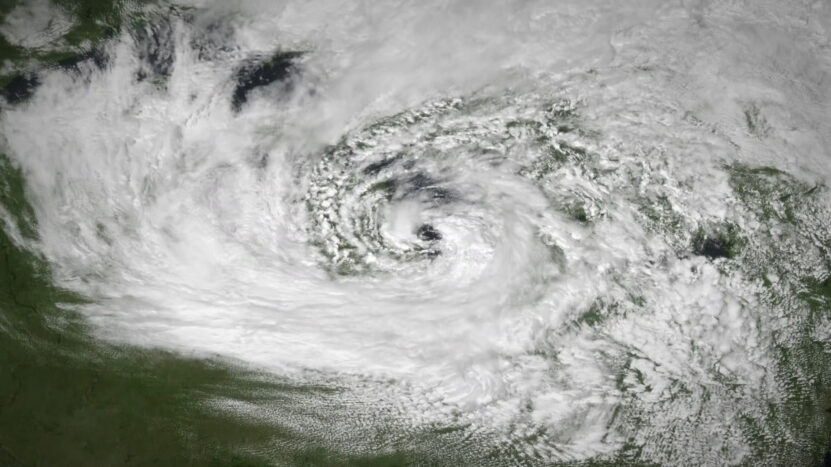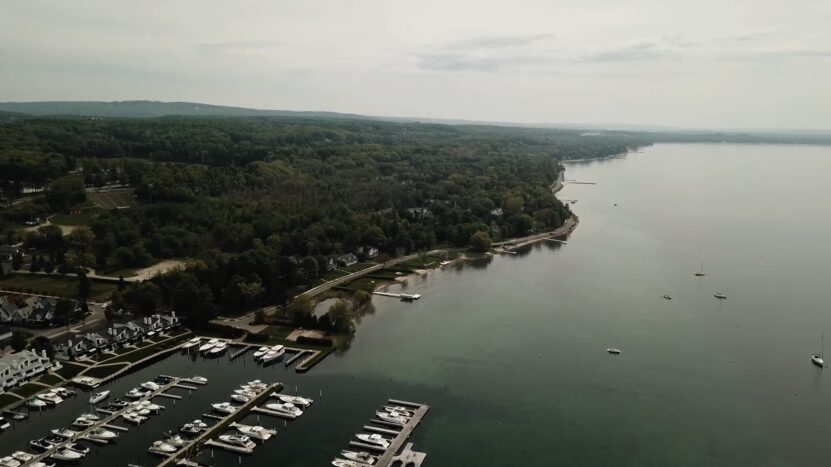The Great Lakes, a magnificent and vast expanse of freshwater, capture the imagination with their sheer size and the mysteries they hold. Among these mysteries is the question of whether these lakes experience tides.
At first glance, one might assume that such large bodies of water would be subject to the same tidal forces that affect our oceans. However, the truth is more nuanced and fascinating.
In this guide, I will discuss the nature of the Great Lakes and their relationship with tides, revealing how meteorological factors play a pivotal role in their water level changes.
Key takeaways:
- The Great Lakes experience very minor true tides due to the gravitational pull of the moon and sun, but these are typically less than five centimeters in height.
- Meteorological factors like wind and atmospheric pressure have a more significant impact on water levels in the Great Lakes than gravitational tides.
- The Great Lakes undergo seasonal and long-term water level variations, influenced by factors such as precipitation, melting snow, and water retention.
- Seiches, large oscillating waves caused by meteorological conditions, are a unique phenomenon in the Great Lakes, often mistaken for tides.
- The Great Lakes’ water level changes, while not significantly tidal, are complex and influenced by a combination of meteorological conditions and minor gravitational forces.
The Nature of Tides in the Great Lakes

True tides, resulting from the gravitational pull of the moon and sun, do occur in the Great Lakes, but they are incredibly subtle, typically less than five centimeters in height. These minute fluctuations are often completely overshadowed by more significant changes in water levels caused by wind and barometric pressure variations.
This leads to a common misconception that the Great Lakes are non-tidal.
Meteorological Influences on Water Levels
The primary drivers of water level changes in the Great Lakes are meteorological conditions. Wind and atmospheric pressure exert a far greater influence on the lakes than the gravitational pull of celestial bodies.
These factors can cause water levels to rise and fall much more dramatically than the minuscule true tides.
Long-Term and Seasonal Variations
Water levels in the Great Lakes are subject to long-term and annual variations. Long-term changes are dependent on factors like precipitation and water storage over many years, while annual fluctuations are linked to the changing seasons, with water levels typically peaking in late spring and reaching their lowest in winter.
Seiches: The Great Lakes’ Unique Phenomenon
A remarkable phenomenon specific to the Great Lakes is the occurrence of seiches. These are large-scale oscillations of the water surface, often mistaken for tides.
Seiches are primarily caused by strong winds and changes in atmospheric pressure, not gravitational forces.
Similarities to Oceanic Tides
The cycle of a seiche, moving from high to low levels, can mimic the six-hour tidal period seen in oceans. However, it’s crucial to understand that seiches are fundamentally different from tides.
In the Great Lakes, they are a result of meteorological conditions rather than the gravitational influence of the moon and sun.
Seiches vs. Tides: A Comparison
While seiches and tides may appear similar, their causes are fundamentally different. Tides are the result of gravitational forces exerted by the moon and sun, while seiches are caused by meteorological factors.
The duration and frequency of seiches can vary greatly, making them distinct from the more predictable nature of gravitational tides.
Lake Erie and Its Notable Seiches
Lake Erie, in particular, is known for its powerful seiches. These can create significant differences in water levels, with breaks between high and low levels sometimes lasting up to seven hours.
This phenomenon adds to the complexity of understanding water level changes in the Great Lakes.
Seiches and Surfing
Interestingly, seiches can also create favorable conditions for surfing on the Great Lakes. While they are not caused by gravity like ocean tides, the oscillating water levels can generate waves that are enjoyed by the Great Lakes surfing community.
The Impact of Seiches on the Great Lakes
Seiches can have significant impacts on the Great Lakes, affecting everything from coastal erosion to the operation of ports and harbors. Knowing and predicting seiches are crucial for the safety and efficiency of maritime activities in the Great Lakes region.
Gravitational Tides vs. Meteorological Effects

The gravitational tides in the Great Lakes are so subtle that they are often indiscernible. Measuring just a few centimeters, these tides are easily masked by the more dramatic effects of wind and barometric pressure changes.
This difference is crucial in understanding why the Great Lakes are not considered tidal in the traditional sense.
Dominance of Meteorological Factors
Meteorological factors, particularly wind and atmospheric pressure changes, are the dominant forces affecting water levels in the Great Lakes. These elements can cause rapid and significant fluctuations in water levels, far exceeding the minor changes brought about by gravitational tides.
Seasonal and Long-Term Water Level Variations
Impact of Seasonal Changes
The Great Lakes undergo noticeable annual variations in water levels. These changes are closely tied to the seasons, with levels typically rising in the spring due to melting snow and increased rainfall and falling in the winter.
This seasonal rhythm is a vital aspect of the lakes’ natural cycle.
Long-Term Water Level Trends
Over many years, the Great Lakes experienced long-term variations in water levels. These trends are influenced by broader climatic patterns, including precipitation levels and water retention in the lakes’ vast watershed.
Knowing these long-term trends is essential for managing the Great Lakes ecosystem and the human activities dependent on it.
FAQs
Can lunar phases affect water levels in the Great Lakes?
Lunar phases have minimal impact on water levels in the Great Lakes. The minor true tides influenced by the moon are usually overshadowed by meteorological factors like wind and atmospheric pressure.
Are the Great Lakes’ water levels rising or falling long-term due to climate change?
Climate change can affect long-term water levels, but the trend (rising or falling) varies and depends on factors like regional precipitation patterns and temperature changes.
Do the Great Lakes have high and low tides like oceans?
No, the Great Lakes do not experience high and low tides in the same way oceans do. Their water level changes are primarily driven by wind, weather, and barometric pressure, not by gravitational forces.
Can seiches in the Great Lakes cause flooding?
Yes, strong seiches can potentially cause localized flooding, especially in low-lying coastal areas and during storms when water levels are already elevated.
Is it possible to surf on the Great Lakes?
Yes, surfing is possible on the Great Lakes, especially during strong seiches and windstorms, which can create surfable waves.
How are water levels in the Great Lakes monitored?
Water levels in the Great Lakes are monitored using a network of gauges and buoys that measure water levels, wind speed, and atmospheric pressure. This data is essential for understanding and predicting changes in lake levels.
Final Words
The Great Lakes do experience tides, but they are minor and largely inconsequential compared to the more dominant forces of wind and atmospheric pressure. It’s the interplay of these meteorological factors, along with the unique phenomenon of seiches, that truly governs the water levels of these magnificent lakes.
Knowing about this intricate dance of nature helps us appreciate the distinct character of the Great Lakes, setting them apart from the oceanic bodies we often compare them to.

